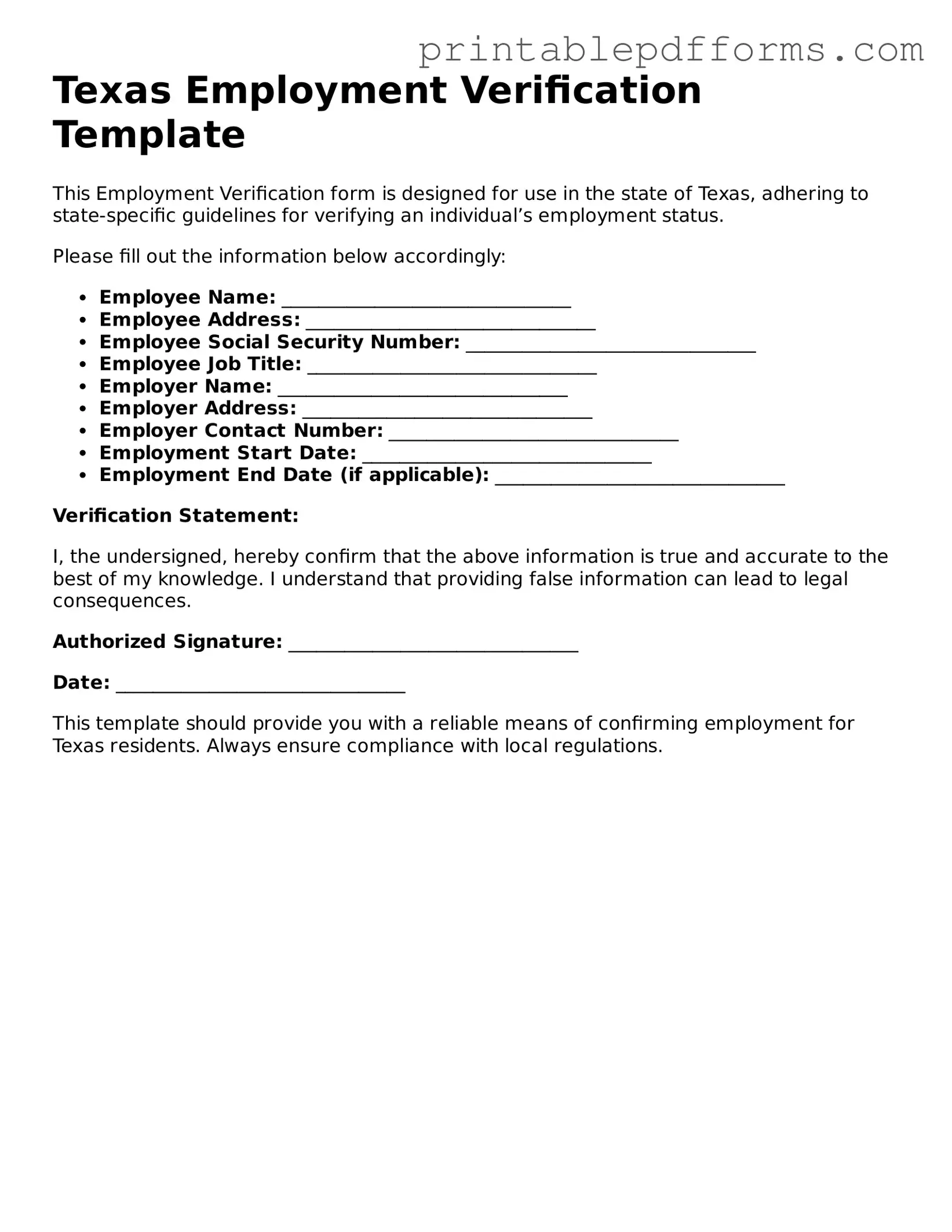The Texas Employment Verification form is a document used to confirm an individual's employment status and details. It is often required by various entities, such as lenders or government agencies, to verify a person's job title, duration of employment, and salary information.
Typically, the form is completed by employers or human resources personnel. It may be requested by current or former employees who need to provide proof of employment for various purposes, such as applying for a loan, renting an apartment, or verifying income for social services.
The form generally includes the following details:
-
Employee's name
-
Job title
-
Dates of employment
-
Salary or hourly wage
-
Employer's contact information
You can usually obtain the form from your employer's human resources department. Some employers may have a specific template they use, while others might provide a standard form. If you are a former employee, you can contact your previous employer to request the necessary documentation.
Most employers do not charge a fee for completing the Employment Verification form. However, policies may vary by organization. It is advisable to check with your employer for any specific practices they may have regarding fees.
The processing time can vary depending on the employer's policies and workload. Generally, it may take anywhere from a few days to a couple of weeks. If you need the verification urgently, it is helpful to communicate this to your employer or HR department.
If your employer refuses to complete the Employment Verification form, you can ask for the reason. Understanding their concerns may help address the issue. If necessary, you can seek alternative documentation, such as pay stubs or tax forms, to verify your employment status.
Yes, you can use the Employment Verification form for various purposes. It can serve to verify your employment for loans, housing applications, or other instances where proof of income or job status is required. However, ensure that the information provided is accurate and up-to-date for each request.
